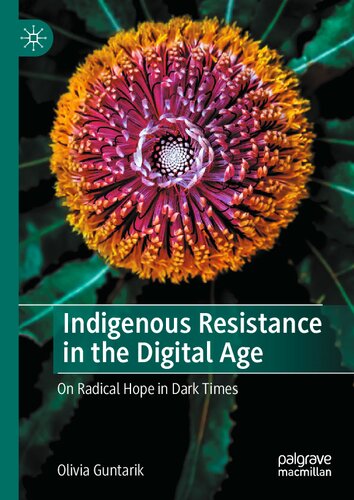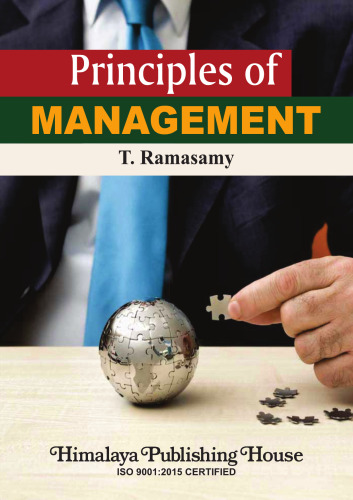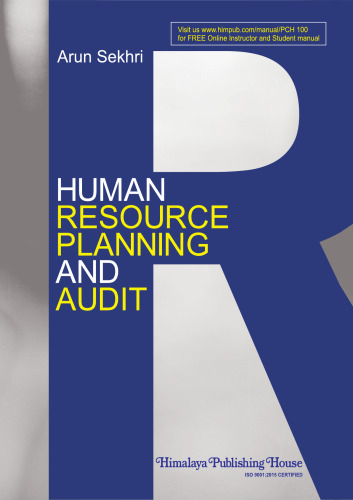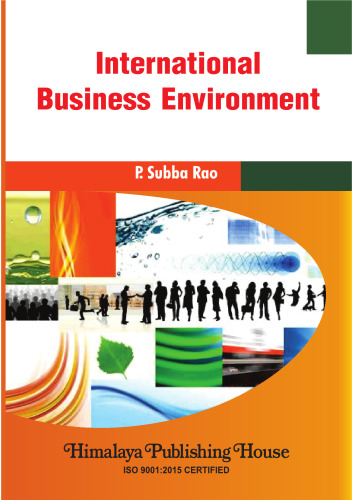21 This parallels how Hawaiian scholar Karin Amimoto Ingersoll describes her experience with nature and the sea. As a surfer, she describes this expe- rience as a literal immersion in water, a dropping into a wave from her surfboard. She enters the water and her Indigenous identity emerges. Ingersoll (2016, 8) explains how surfing with her partner gives her an entry point into a way of being: When I enter the ocean, my indigenous identity emerges. I become a his- torical being riding waves, running as a liquid mass, pulled up from the deep and thrown forward with a deafening roar. I disappear with fish and strands of seaweed as I course through veins of ocean currents... When I enter the sea, I enter a process of reimagination as the power of the ocean continually reshapes me alongside the coastal shores of my home. This kinaesthetic engagement gets me thinking about the depth of the ocean and oceanic literacies. Imagine what the sea might say, if we could find right ways to move with it. Listening with our full being and an atten- tiveness to lifeforms, being and becoming our true selves. Crossing the threshold is a symbolic act, a giving of yourself over to something more powerful than you. And for me, this giving over of myself to something more powerful than me emerges in the form of memories, hope, fantasies, desire, future planning, connection or disconnection, a grappling with unresolved instinctive emotions. Through walking, our path unfolds as we move. The working through of problems takes place in the reflections this experience invites. In nature, other landscape memories come to view for me. Sometimes an imagined landscape. I can bring back my first homeland Borneo this way. This longed-for place becomes a part of me and the cen- tre of my world. The longing is deeply visceral and emotional and can be described as both a joy and a pain. A joy because that landscape is always in me in the form of memories, sacred sites – the mountains, rivers and the rainforests of that place. And yet painful too because of the disappearing rainforest, my own sense of a disappearing self, my grieving, as I’ve lost my first language and the ability to speak my mother tongue. Walking the threshold of possibility is about give and take, loss and gain. Walking is meditative as the personal ground opens up for us. We are able to glimpse the shape of our personal sense of reality. This might emerge as certain tendencies, beliefs, sometimes whirring negative self- talk, the shadows of a former self or new identity. 2 WALKING PLACE 22 Crossing over from the built to the natural environment allows me to explore and reclaim my Indigenous identity. The act of walking and feel- ing the ground beneath my feet brings memories of home soaring to the surface of my thoughts. I come from a small village in Borneo surrounded by jungle and so much of the landscape in Australia reminds me of that place. Both the physical and social aspects of walking remind me of what it means to be part of a community. The sense of belonging this commu- nity engenders. Boundaries between homelands blur. Where am I? The wilderness in Borneo or the wilderness in Australia? And the realization dawns on me that both are under threat.
چکیده فارسی
21 این با نحوه توصیف کارین آمیموتو اینگرسول، محقق هاوایی، تجربه خود را با طبیعت و دریا مقایسه می کند. او به عنوان یک موج سوار، این تجربه را به عنوان غوطه ور شدن واقعی در آب، ریزش به یک موج از تخته موج سواری خود توصیف می کند. او وارد آب می شود و هویت بومی او آشکار می شود. اینگرسول (2016، 8) توضیح میدهد که چگونه موجسواری با شریک زندگیاش به او نقطه ورود به یک راه وجودی میدهد: وقتی وارد اقیانوس میشوم، هویت بومی من نمایان میشود. من به موجودی تاریخی تبدیل می شوم که بر امواج سوار می شود، مانند توده ای مایع می دود، از اعماق بیرون کشیده می شود و با غرشی کر کننده به جلو پرتاب می شود. من با ماهی و رشتههای جلبک دریایی ناپدید میشوم که در رگهای جریانهای اقیانوسی میروم... وقتی وارد دریا میشوم، وارد فرآیند تخیل مجدد میشوم زیرا قدرت اقیانوس مدام در کنار سواحل ساحلی خانهام به من شکل میدهد. این تعامل حرکتی باعث میشود به عمق اقیانوس و سواد اقیانوسی فکر کنم. تصور کنید که دریا چه میگوید، اگر میتوانستیم راههای درستی برای حرکت با آن پیدا کنیم. گوش دادن با تمام وجود و توجه به اشکال زندگی، بودن و تبدیل شدن به خود واقعی ما. عبور از آستانه یک عمل نمادین است، تسلیم شدن خود به چیزی قدرتمندتر از شما. و برای من، این تسلیم شدن خودم به چیزی قدرتمندتر از من در قالب خاطرات، امید، خیالات، آرزوها، برنامه ریزی های آینده، ارتباط یا قطع ارتباط، دست و پنجه نرم کردن با احساسات غریزی حل نشده ظاهر می شود. از طریق راه رفتن، مسیر ما با حرکت باز می شود. حل مشکلات در بازتاب هایی صورت می گیرد که این تجربه دعوت می کند. در طبیعت، خاطرات منظره دیگری برای من به چشم می خورد. گاهی اوقات یک منظره خیالی. من می توانم وطن اولم بورنئو را از این طریق بازگردانم. این مکان آرزومند بخشی از من و مرکز دنیای من می شود. اشتیاق عمیقاً احشایی و احساسی است و می توان آن را هم به عنوان یک شادی و هم به عنوان یک درد توصیف کرد. یک شادی زیرا آن منظره همیشه در من به شکل خاطرات، مکان های مقدس - کوه ها، رودخانه ها و جنگل های بارانی آن مکان است. و در عین حال دردناک به دلیل جنگل های بارانی در حال ناپدید شدن، حس ناپدید شدن خود، غم و اندوه من، زیرا زبان اول و توانایی صحبت کردن به زبان مادری ام را از دست داده ام. پیمودن آستانه امکان مربوط به دادن و گرفتن، ضرر و به دست آوردن است. پیاده روی مدیتیشن است زیرا زمینه شخصی برای ما باز می شود. ما قادریم شکل حس شخصی خود از واقعیت را نگاه کنیم. این ممکن است بهعنوان گرایشها، باورها، گاهی اوقات خودگویی منفی، سایههای خود قبلی یا هویت جدید ظاهر شود. 2 مکان پیاده روی 22 عبور از محیط ساخته شده به محیط طبیعی به من امکان می دهد هویت بومی خود را کشف و بازیابم. عمل راه رفتن و احساس زمین زیر پایم، خاطرات خانه را به سطح افکارم می آورد. من از دهکده ای کوچک در بورنئو می آیم که توسط جنگل احاطه شده است و بسیاری از مناظر استرالیا مرا به یاد آن مکان می اندازد. هر دو جنبه فیزیکی و اجتماعی پیاده روی به من یادآوری می کند که بخشی از یک جامعه چیست. احساس تعلق این جامعه را ایجاد می کند. مرزهای بین وطن محو می شود. من کجا هستم؟ بیابان در بورنئو یا بیابان در استرالیا؟ و متوجه شدم که هر دو در معرض تهدید هستند.
ادامه ...
بستن ...
34 knowledge about their traditional lands on their terms. In doing so, we are able to explore social practices surrounding knowledge production and reproduction experiences in close proximity. We interrogate the play of digital technologies in imagining the intricate and complex ‘sense of place’ we seek to explore in greater depth. We synthesize as we empathize, an act that stirs the impulse from inaction to anticipatory action. The reality of being ‘on Country’ is crucial to establishing this sense of place. We say Country with a big C because We mean more than just place politics. We mean relationships, totemic and spiritual, how we live with, in and alongside Nature, how we listen-learn; to the ways that time collapses in on itself to become greater and all-encompassing, stilling time into the Now, Futurity and Deep Time. This is as much about how we acknowl- edge Survival, Endurance and Cultural Continuity as it is about being Present in time. Technology may easily connect us to place, but may also contradict First Nations peoples’ practices, which is why an elaboration of time is necessary. Deep Time is a difficult concept. It draws on scale and depth, and invites us to see the wholeness of things. It is a perspective for seeing the world as a present “moment” in time. The recognition of Deep Time contextualizes the limits of the planet’s resources, providing a framework for understanding strategies for survival (Zen 2001). To position Deep Time in Indigenous knowledges is to recognize new kinds of place-making principles & practices. The long history of Indigenous survival over millennia including enduring several Ice Ages is revealing of the nature of adaptation, encompassing the epochal Pleistocene and Holocene, and what it takes to live in balance. The recognition of this enduring history allows us to translate the past into an elaborate and a deeper history of Indigenous survival, thus making history more expan- sive, layered and conceptually dense (McGrath & Jebb 2015). In Australia, this is a history founded on stolen lands and stolen lives. And this must be acknowledged. We cannot move past history without this recognition first and foremost. To do so is to live in denial and to relegate history to the margins and as invisible in our pursuit of progress. We gallop forward in our endless work to plot and carry out “renewal” projects that ultimately act as a cover-up to colonial transgressions. We erase history in the pro- cess. We will always be reconciling, not reconciled. Deep Time is a way of seeing, which is akin to Mark Rifkin’s (2017) notion of plural temporalities. A rupture that begins from body and mind. An endless hole in the ground that also connects to sky. It is the capacity O. GUNTARIK 36 knowledge in ways that denote its local context, its historical journey through archives and the disciplines, and its onward use and engagements according to Indigenous protocols of knowledge management”. The debate about just how democratizing digital technologies can be points to a long-standing disagreement between Morozov (against) and Castells (for) about the emancipatory potential of technology. This debate sets the conceptual backdrop for our thinking here, and re-evaluates the ethical tensions around how to achieve emancipation through the digital in the context of Indigenous lives. This is the reason for grounding envi- ronmental justice in Indigenous ontologies and experiences. Human rights sit at the book’s heart. T ime and Tide The estuary juts into the bay. I wade with my children into the Mornington Peninsula, a strip of water in a private cove resting at the tip of a point that stands as the gateway to the wider bay area and that hugs the city of Melbourne and its enclaves. At the bay’s furthest reaches where we stand at Point Nepean we glide through the water and turn toward the indus- trial port. It is sundown. Around 170 years ago in 1852, the first ship cruised through with the first fleet of early settlers, some 850 passengers. The site has since served a myriad purposes, as quarantine station and cemetery, as defense land and as centre for refugees. Now it is the site of a national park but has also been the subject of contested land in bids for land development for the built environment industry. The community claimed to be kept “in the dark” over plans for the government to create a “private enclave”. Time, tide. Change. We wade further out to sea. A stingray is disturbed camouflaged in the sand, upsetting the seabed. I float on my back because I fear the stringray’s barb cutting my heart. This is how the entertainer Steve Irwin died and this is what I’m thinking of as I stare up into the bluest restless sky. It is an out of body experience but the sea buoys me up. The sea is musical and I must listen closely before my body can relax to its rhythms. The rhythm is a tempo. Of tide and time. Another history. Where the peninsula protrudes into the sea, the First Peoples see a mix of sand and wilderness and an undulating land extension they call O. GUNTARIK 42 Digital Storytelling (sic) is frequently conceived and deployed as a tool for working towards equity and social justice, providing space for ordinary and often marginalised people to be heard (who otherwise might not be heard) and enabling them to express their – often extraordinary – stories
ادامه ...
بستن ...



![Our mission to the court of Marocco [Morocco] in 1880, under Sir John Drummond Hay - pdf Our mission to the court of Marocco [Morocco] in 1880, under Sir John Drummond Hay - pdf](https://dl.libsan.ir/images/1/12/112108724_694b9e9769312.jpg)






